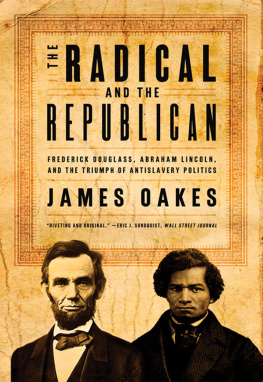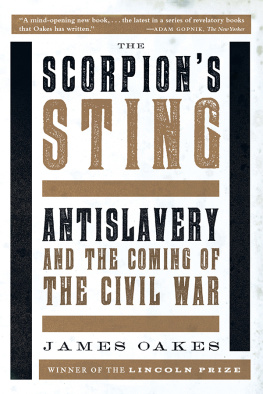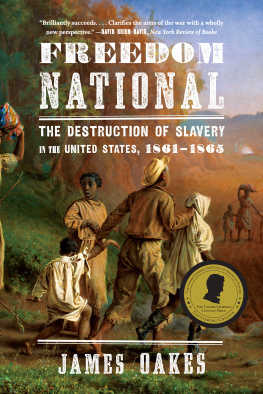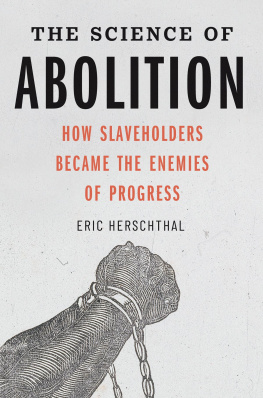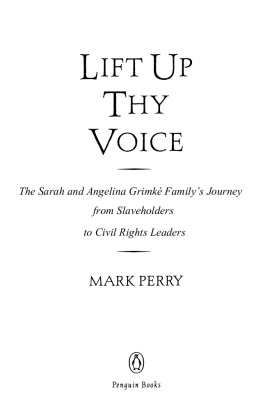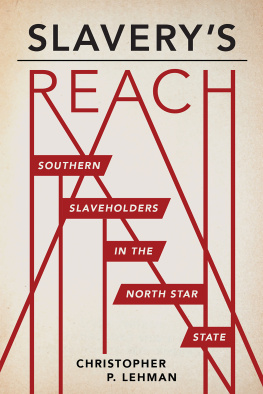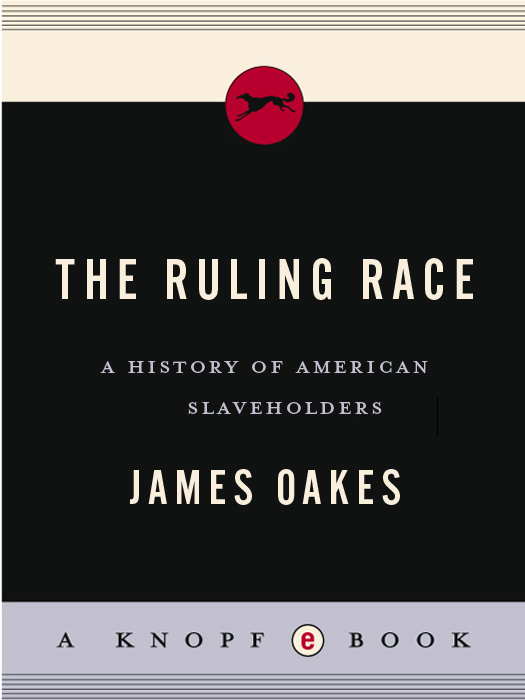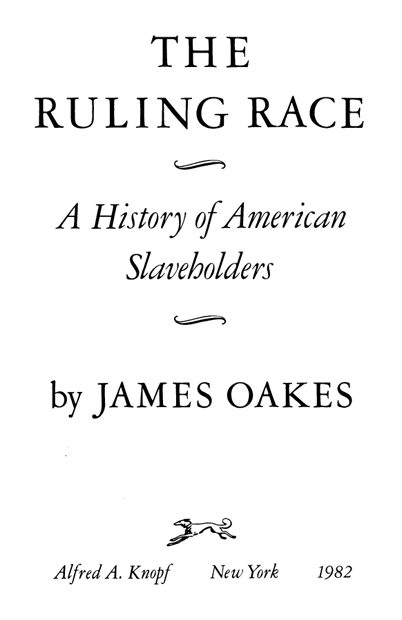THIS IS A BORZOI BOOK
PUBLISHED BY ALFRED A. KNOPF, INC.
Copyright 1982 by James Oakes
All rights reserved under International and Pan-American Copyright Conventions. Published in the United States by Alfred A. Knopf, Inc., New York, and simultaneously in Canada by Random House of Canada Limited, Toronto. Distributed by Random House, Inc., New York.
Library of Congress Cataloging in Publication Data
Oakes, James.
The ruling race, a history of American slaveholders.
Bibliography: p.
1. SlaveholdersSouthern States. 2. Southern StatesSocial conditions. 3. SlaverySouthern States. I. Title.
E 441 O 18 1982 975 8148124
eISBN: 978-0-307-82813-2 AACR 2
v3.1
for Deborah, forever
Contents
Introduction
I N RECENT YEARS the history of slavery has been illuminated by a succession of often brilliant studies of Afro-American life and culture. Much work remains to be done; yet, paradoxically, we now know more about the daily experience of the typical slave than we do about the typical slaveholder, not to mention the non-slaveholding white. As I surveyed the literature on the slaveholders, I found virtually no description of what the average slaveholder thought about each day, what his religious principles were, and what they meant to his life. I did not know how a slaveholder became a slaveholder, nor did I fully understand what slavery meant to an aspiring young master. I was not even sure what a typical slaveholder was. Finally, I had almost no idea how any of thesethe slaveholders religion, politics, view of slavery, typicalitychanged over time. It was in part in recognition of this paradox that I undertook this study.
There were about 400,000 slaveholders in the South in 1860. In setting out the facts of their history, I have been guided by two priorities: First, I have tried to establish an accurate portrait of the entire slaveholding class, and to demonstrate that the slaveholders were a more diverse group than has generally been appreciated. Second, I have tried to elicit larger patterns of political, ideological, economic, and demographic development without doing violence to the evidence of diversity within the slaveholding class.
In this attempt to fill these voids in the historiography of slaveholders, a few major themes have developed and are implicit throughout the study. The first concerns typicality: Every historian of the Old South knows that while the majority of slaves lived on units with more than twenty bondsmen, the majority of slaveholders owned five slaves or fewer. Thus, the typical slaveholder did not necessarily own the typical slave. Most historians have used this fact to justify their emphasis on large plantations. Yet the case could be made that since almost half the slaves also lived on units with twenty bondsmen or fewer, equal attention should be paid to the smaller slaveholders. In terms of sheer numbers, small slaveholders overwhelmingly dominate the history of their class.
But historical significance is not determined by numbers alone, and in assigning priorities I have not adhered to any single standard. Plantersif defined as those with twenty slaves or morewere important because they owned so large a proportion of the slave work force, because they have come to play so significant a role in the potent mythology of the antebellum South, and because historians have made them important. Still, there were othershundreds of thousands of otherswho owned slaves but who never entered the planter class. Among slaveholders they were the vast majority, and in large part this is their history.
Coming to terms with the question of typicalityrecognizing the preponderance of smaller slaveholdersled me to a second series of questions that form another theme of this study. What was the nature of power in an agricultural society where the greatest wealth was garnered from a work force that played no part in the normal political processes; where, despite concentration, wealth was too diffused to organize effectively; where the owner of five hundred slaves rarely had more legal and political rights than the owner of a single slave, or even a non-slaveholding farmer; where the ruling class of slaveholding families frequently amounted to between a third and a half of the states white population? If the slaveholders, particularly the planters, were disproportionately powerful in the politics and economics of the Old South, what was the nature of that power? How did they exercise it, and how did they justify it?
The answer to these last questions drew me to the third, and perhaps prevailing theme. How did the slaveholding class, which was molded by the same forces that shaped the nation, which fought Americas wars and helped inspire its Revolution, a class which boasted of its patriotism, its devotion to freedom, its adherence to the major tenets of liberalismhow did such a class justify its continuing commitment to slavery and remain so steadfast in that commitment that it willingly separated from the Union it had helped to create? In short, how could the slaveholders ideology prove so malleable as to reinforce simultaneously their devotion to black slavery and to democratic freedom? It is here, in the triumph of the slaveholders liberalism, that the legacy of slavery becomes a truly American dilemma.
In suggesting these themes, I have relied heavily on the work of those historians who have preceded me, and, inevitably, I have differed with some of them. I agree with those who locate the origins of southern slavery in the labor shortage of the New World colonies and with those who stress the capitalist nature of the slave system in the Old South. Whatever their disagreements, this theme unifies the work of such diverse scholars as Oscar Handlin, Winthrop Jordan, Peter Wood, Edmund Morgan, Stanley Elkins, Kenneth Stampp, and Herbert Aptheker. I have learned a great deal from all of them, more so than my notes may indicate.
And, although I disagree with many of his conclusions, I have also learned much from Eugene Genovese. Throughout this work I have adopted his definition of paternalism, for I believe it is historically accurate and conceptually sophisticated. Genovese explicitly discards the popular equation of paternalism with benevolence in favor of a more complex understanding of the term. Thus, paternalism suggests a social order which is stable, hierarchical, indeed consciously elitist, and therefore fundamentally antithetical to liberalism. A paternalist assumes an inherent inequality of men: some are born to rule, others to obey. A liberal espouses a far different social fiction: All men are created equal. A paternalist stresses the organic unity born of each individuals acceptance of his or her place in a stable, stratified social order. A liberal stresses individualism, social mobility, and economic fluidity within a society which promotes equal opportunity. Whereas paternalism takes as its model the extended, patriarchal household, modern Western societies have moved more and more toward the private, nuclear family. Liberal and paternalistic societies are alike, however, in displaying (though of course in different ways) tendencies toward both cruelty and kindness, both benevolence and oppression, and therefore Genoveses argument that paternalism can explain the diversity of treatment within a slave system is well founded.
With these alternative visions of a social order come divergent political and economic implications: paternalism is the ideological legacy of a feudal political system with no fully developed market economy; liberalism developed alongside political democracy and free-market commercialism. The two systems are thus intrinsically antagonistic, and this antagonism will be heightened when a paternalistic social order finds itself virtually isolated in an increasingly liberal world. These appear to be Genoveses assumptions; they are mine also.


